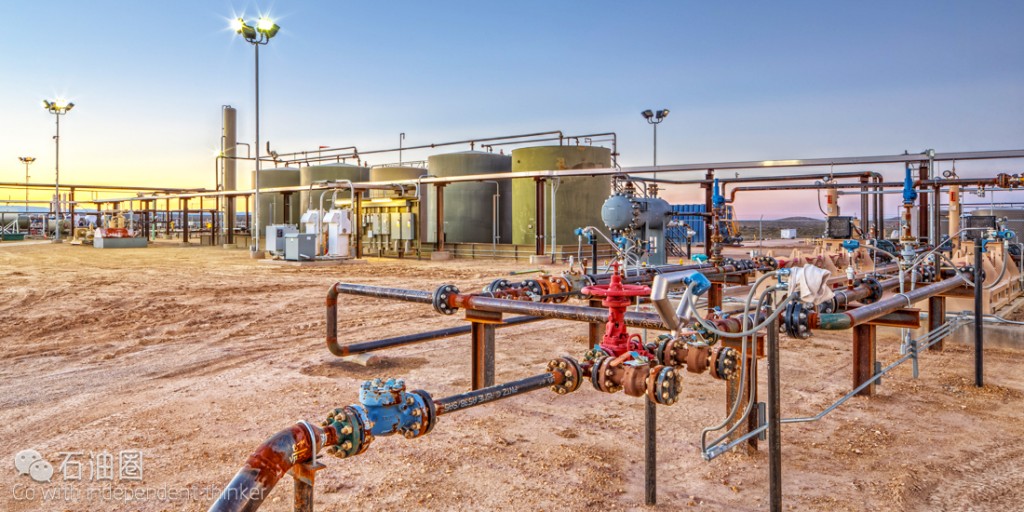Natural gas processing facilities, terminals, pipelines and other forms of petroleum product transport are part of the midstream oil & gas sector. Operating these midstream operations safely, efficiently and reliably has proven to be an ongoing challenge.
Emerson’s Chuck Miller coordinated the gathering of midstream sector thought leaders so that they could share ideas and needs relative to how to better run their operations in the coming years. The project developers paradigm prior to the sharp decline in oil & gas prices was build it fast or build it to last. However, the current industry challenges have changed the gas processor’s focus to the improvement of existing asset reliability and efficiencies that drive capacity and throughput.
Thought leader exchanges included topics that ranged from the integration of field data, evolving deployed technologies and solutions, and mobile client applications for field operations teams to cyber security, process safety management, modularization and more.
Chuck shared a few highlights with me that I’ll pass along. For many midstream operators, total field data integration is needed since personnel in the field and at the wellhead do not necessarily communicate to the teams running the pipelines and gas plant. It’s important to be able to predict changes in incoming feed pressure, flow and composition to enable the appropriate action prior to the event actually occurring at the gas processing facility.
And, during pipeline pigging operations, better liquids estimates are needed by the gas plant operators to take proactive measures before the estimated influx actually occurs.
Technology Adoption
Preserving cash flow is critical across the midstream sector in this era of low oil & gas prices. Newer technologies are tried and proven out in smaller pilots before committing to them on a broader scale. It is important to squeeze long life from the equipment before replacing these assets. However, where operational benefits in reliability and availability are seen such as with mobile client apps, the technologies are more quickly adopted.
Process Safety Management
From a process safety management standpoint, audits from regulatory agencies are increasing in frequency and becoming more detailed. Safety instrumented functions are typically performed with redundant DCS and PLCs although separate safety instrumented systems are increasingly used.
Modularization
When productions levels of oil and gas were rapidly increasing due to advancements in shale oil & gas recovery, the trend for modularization accelerated to quickly add gas-processing capacity. With modular plants, project teams could control the quality of the fabrication, better manage construction time, and support more detailed and frequent inspections.
The advantage was that the level of automation for each asset could be standardized making it easier for the operations and maintenance teams to efficiently move from assets in different fields and across the enterprise. This standardization also decreased the training time for new field personnel and increased safety through familiarization and standardized practices.
Reliability
On the topic of reliability, major downtime issues include equipment failure, large volumes of liquids hitting a slug catcher, abnormal operating conditions, instrument & electrical work or even a delivery person hitting the emergency shutdown (ESD) button by the plant gate.
Generally, most incidents involve miscommunication between inexperienced field personnel and other people not understanding their responsibilities. Establishing automation standards facilitated the simplification of work practices and ongoing training programs enabled field teams to help operators identify these causes of unplanned downtime and reliability issues.
Optimization
Chuck noted one final issue around operational optimization. Many natural gas processing plants currently operate on a fixed-fee contract. This means that the operations and maintenance personnel need to establish an optimized throughput level, but beyond that, gas processors are not incentivized to maximize the residue to NGL cut since the payout is the same. Opportunities for recovery optimization will return when market conditions change plant recovery modes. An example would be to recover higher levels of ethane.
Overall, Chuck noted that business objectives are changing from optimizing project performance to add capacity to improving existing capacity for reduced operational risk, improved reliability and improved efficiency. Summing it all up, most of the thought leaders believed that market conditions would continue to dictate how aggressively these objectives are pursued.


 石油圈
石油圈
